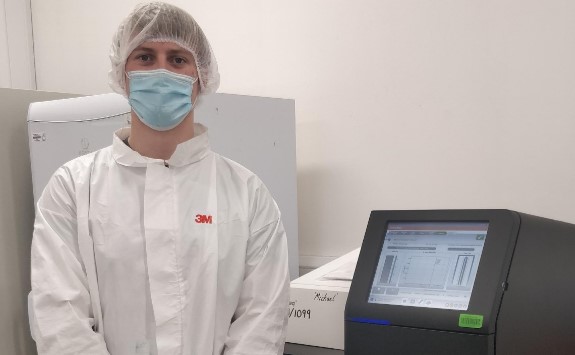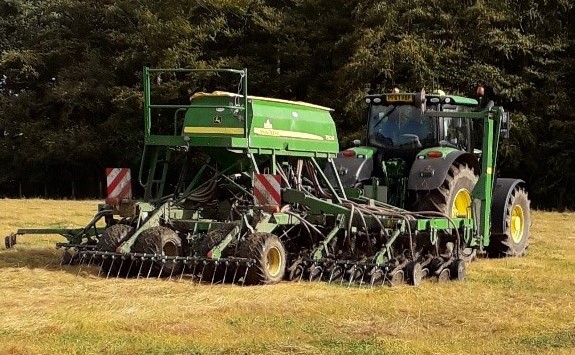Our Postgraduate Researchers
Basem Attar
Project title
Abundance, diversity, and phylogenetic study of the faba bean foot and root rot disease complex in the United Kingdom
Project topic
The aim of my PhD project is to describe the essential disease causal agent for faba bean root rot in the UK and develop a risk prediction system for farmers. Foot and root rot is a disease complex with several organisms contributing to the disease. The project will first investigate the causal agents of disease using a combination of classical pathology (isolation/culturing/pathogenicity studies) and molecular identification (DNA barcoding). Following characterisation, species specific molecular tools will be developed to enable a broader survey of plant and soil from bean growing locations from around the UK. I will also evaluate DNA extraction methods from soil with the aim of developing a risk prediction service for growers, focused on profiling the presence of the key disease-causing agents at sites. Finally, we will evaluate faba bean germplasm available in the UK for the presence of resistance/tolerance phenotypes which could become the focus of future breeding programs and integrated disease management strategies.
Project summary
The root rot disease complex comprises a group of organisms (Fungi, Bacteria, viruses and oomycetes) that affect a very broad spectrum of crops worldwide.
The United Kingdom is one of the most important faba bean producers after Ethiopia and Australia. Foot and root rot of faba bean is an important disease that is reported as a limiting factor for faba bean production in many areas, including the UK. The causal agents are not fully characterised, and progress on control measures such as identifying resistant germplasm through to predictive diagnostics for land management are hampered as a result.
Infected plant samples and soil samples will be collected from faba bean growing areas in the United Kingdom. Putative pathogens will be isolated, and pathogenicity will be tested for the isolates obtained. DNA barcoding using ITS and TEF1α will be used to identify the pathogenic organisms and species-specific qPCR assays will be developed to detect the essential and dominant fungal species in the UK. qPCR will be used to perform a larger survey of faba bean growing areas. In addition, the qPCR will form an essential component of a soil risk prediction tool to enable growers to understand the risk of disease on new land in production.
External project collaborators
Processors and Growers Research Organisation PGRO
Dates of project
April 2022-April 2026
Contact Details

Omnia Elshorbagy
Omnia Elshorbagy: Exploring Potato's Virome Leading to Improved Diagnostics and A Novel Control Strategy
Project Title
Exploring Potato's Virome Leading to Improved Diagnostics and A Novel Control Strategy
Partners: Fera Science, UK
Funder: Egyptian Higher Education and Scientific Research Ministry, represented by The Egyptian Bureau for Cultural &Educational Affairs, Egyptian Embassy in London, UK.
Project Summary
The aphid-transmitted viruses in potatoes pose the most threatening diseases affecting potato fields worldwide by reducing final product quality and quantity. To improve potato productivity and quality, various aspects must be developed as potato seed quality, forecasting of pests and diseases, as well as developing protection strategies. Through this project, there are three strategies for limiting potato viruses on different levels as a way to improve potato productivity to meet market needs. Firstly, expansion in putting biological specific treatment as RNA biopesticide to avoid viruses spreading by inducing its natural RNAi mechanism. In addition, screen viral metagenomics data analysis for Egyptian field strains as a defensive line to build on the protection strategies. Finally, reaching a well-developed detection method using LAMP assay which will depend on sequence resulting from strains metagenomic study, thus, by possession such assay it will offer a decrease in the cost of viruses’ detection as it needs fewer devices and its results will visually colourimetric so no need for several steps of detection.
Supervised by
Prof. Neil Boonham, Newcastle University
Dr Kirsty McInnes, Newcastle University
Dr Adrian Fox, Fera Science
Professional Experience
Previous Projects
2010-2017
Project title: "Identification of transmission determinants of tomato yellow leaf curl virus (TYLCV) as a model of begomoviruses through their whitefly vector B. tabaci a step towards blocking virus transmission"
Funder: The Science, Technology & Innovation Funding Authority (STDF)- The Egyptian Ministry for Scientific Research
Publications
- Taha, O., Fahmy, I., AbdElhady, A & AbdAllah, N. A. (2016). Use of posttranscription gene silencing in squash to induce resistance against the Egyptian isolate of the squash leaf curl virus. International Journal of Genomics. http://dx.doi.org/10.1155/2016/6053147
- Fahmy, I. F., Taha, O., & El-Ashry, A. N. (2015a). First genome analysis and molecular characterization of Chickpea chlorotic dwarf virus Egyptian isolate infecting squash. Virus Disease. doi: https://doi.org/10.1007/s13337-014-0246-4
- Abu El-Heba, G. A., Hussein, G. M., Fahmy, I. F., Abdou, S. M., Faisal, A., Taha, O., & Abdallah, N. A. (2015). Impact of cis-acting elements’ frequency in transcription activity in dicot and monocot plants. 3 Biotech. https://doi.org/10.1007/s13205-015-0305-6.
- Farouk, I. F., El-dougdoug, K., & Taha, O. (2011). Generation of infectious clone of tomato yellow leaf curl virus Egyptian isolate using the ф29 DNA polymerase. Egyptian Journal of Virology. 8, 325–344. https://www.researchgate.net/publication/280555436
Contact Details
Email: o.elshorbagy2@newcastle.ac.uk, omniataha.h@gmail.com
Researcher ID: AAD-3097-2019
LinkedIn: https://www.linkedin.com/in/omnia-elshorbagy-41074b150/
Twitter: https://twitter.com/OmniaElshorbag3
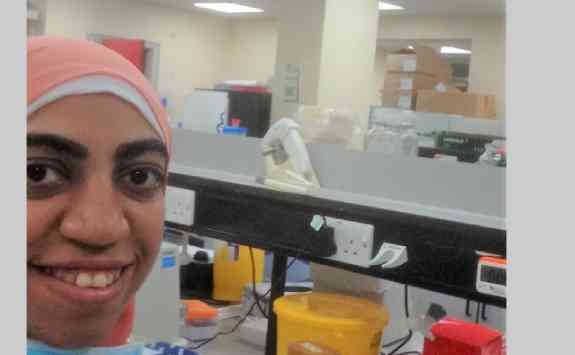
.jpg)
Julius Olumeh: Combating Tuta absoluta (Meyrick), on Solanaceous Vegetables Using Fungal Entomopathogens: Integrated Pest Management Strategy
Project Topic: Efficacy of Fungal Entomopathogenic Biopesticides in Management of Insecticide Resistance on the Tomato Leaf Moth (Tuta absoluta (Meyrick)
- Partners: Centre for Agriculture Biosciences International (CABI-UK)
- Funder: Commonwealth (CSC) scholarship, Newcastle University Research Fund
- Social media:
Linkedin: (1) Julius Olumeh | LinkedIn
Wordpress Blog: My Home ‹ olumehjulius — WordPress.com
Instagram: Julius Olumeh (@ojayjulius) • Instagram photos and videos
Twitter: Julius Olumeh (@JuliusOlumeh) / Twitter
Summary:
The Tomato leaf miner (Tuta absoluta) (Meyrick, 1917), (Lepidoptera: Gelechiidae) is a major devastating pest in tomatoes, estimated to cause 80% - 100% yield losses in both open field and green house tomato production. The pest’s feeding nature and quick development of resistance to all categories of insecticides enables them to escape direct pesticide contact, and substantially limit chemical control efficacy. Biological control using Entomopathogenic Fungi (EPFs) based biopesticides is suggested as a potential winning strategy against the insect’s defences, due to its diverse modes of action with the advantage of host specificity. My research seeks to understand the factors limiting efficacy of chemical insecticides in Tuta absoluta, explore currently used IPM strategies, and determine synergetic/antagonistic interrelationships with natural host plant resistance and endophytic EPFs in an Integrated Pest Management strategy.
Paper:
Otambo, W.O., Olumeh, J.O., Ochwedo, K.O. et al. Health care provider practices in diagnosis and treatment of malaria in rural communities in Kisumu County, Kenya. Malar J 21, 129 (2022). https://doi.org/10.1186/s12936-022-04156-z
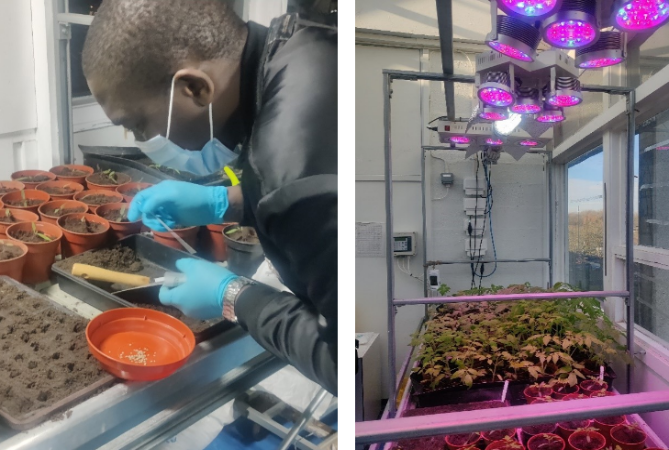
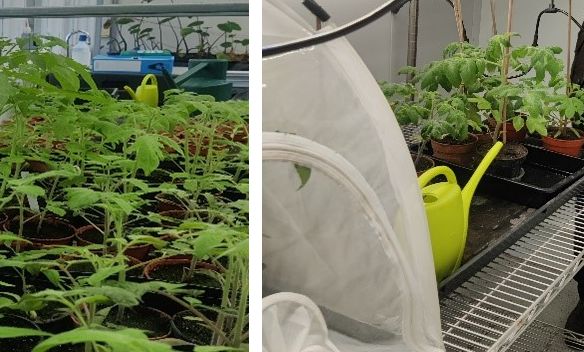
Charles Brakspear - Can organic substrates from insect bioconversion systems provide sustainable crop nutrition and protection?
Project Topic: The purpose of this project is to examine the chemical and physical properties and microbial communities in the residue remaining after insect bioconversion to ascertain the function and the potential role as biofertilisers or growth media in different horticultural/agricultural scenarios.
- Partners: Fera Science Ltd.
- Funder: IAFRI
- Social media: @BugEnviro @CharlesZimbabwe
Summary:
The concept of using insects to reduce organic waste and to derive high value products from the insects has been researched for the past few decades and has recently been taken up by a number of companies globally for the production of protein for inclusion in animal feed. The insect species that has been the focus of this research is the black soldier fly, Hermetia illucens. This species can develop on a wide range of organic substrates ranging from vegetable waste to animal manures. In addition to the products derived from the insects (protein, fats and chitin) the residual rearing material remaining after the insects have completed development can be used as an organic fertiliser and it is possible that this will act as a biofertiliser due to the presence of a diverse range of microorganisms. Limited studies have also shown that leachate produced in the insect bioconversion process can have an effect on plant diseases.
The research aims of the project are:
- Production and characterisation (chemical, physical and biological) of the rearing substrate residues from a range of organic materials.
- Glasshouse and field trials to determine effect on plant growth
- Glasshouse and field trials to determine potential effects on a range on plant diseases
- Glasshouse and field trials to determine soil improvement qualities
- Assessment of agri-food sectors which most benefit from use
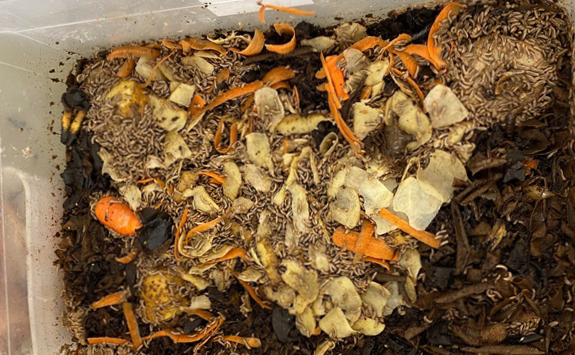
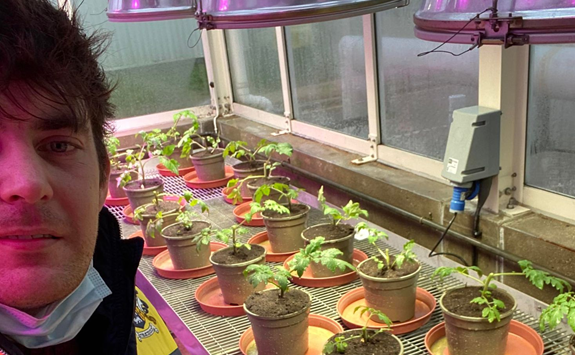
Hannah Fenton: Combatting pesticide resistance in insects using botanical bio-synergists
Project Topic: Insect pesticide resistance is a continuing and rapidly spreading issue for growers, particularly with their options for chemical control being progressively restricted by legislation. Interest is, therefore, rising in the use of synergists to enhance the efficacy of pesticides and improve/restore their effects on insect pests.
- Partners: Fera Science Ltd
- Funder: Newcastle University and Fera Science Ltd (IAFRI studentship)
Summary:
Over 600 species of pests have developed some level of resistance to pesticides, rendering many products ineffective and reducing the options for pest management (Sparks and Nauen, 2015). With increasing restrictions on use and withdrawal of active ingredients (European Commission, 2020), together with the decline in the rate of new insecticide discoveries, options need to be explored to extend the useful life of products currently available.
Plant derived compounds have been shown to interfere with the activity of the enzymes that detoxify insecticides and are involved in metabolic resistance in insects (Norris et al., 2018). The use of such compounds will increase the efficiency of insecticides thereby reducing application rates and/or counteract metabolic resistance allowing effective control to be restored without increasing application rates. This project explores the ability of selected botanical products to enhance the efficacy of certain pesticides in a range of insect pest species.
Mike Parr: Residual effects of land management practices on the extant bulk soil microbial community of arable soils
Project Topic: Soil health is becoming more and more important to the modern farmer, so understanding how their past decisions will affect their future is vital.
- Collaborators: FERA Science: Ian Adams, John Walshaw
- Social media: Twitter: @Mikerobiomes
Summary:
This project looks at how the decisions land managers make can affect crop success years down the line. It used the long-term cropping systems experiments at NU-FARMs (QLIF) as a platform for these studies. To achieve this, the effect of tillage on soil moisture retention and crop growth metrics is being quantified, as well as the measurement of the residual effects of past land management practices on extant bulk soil microbial community through the use of eDNA sequencing.
